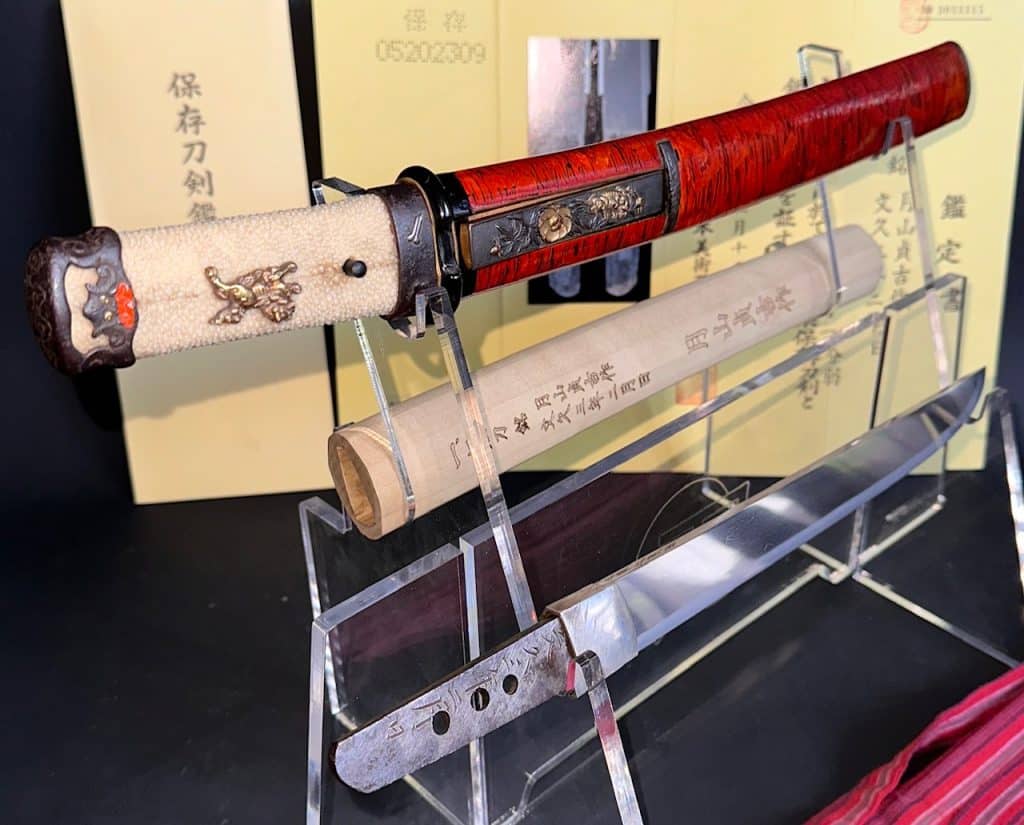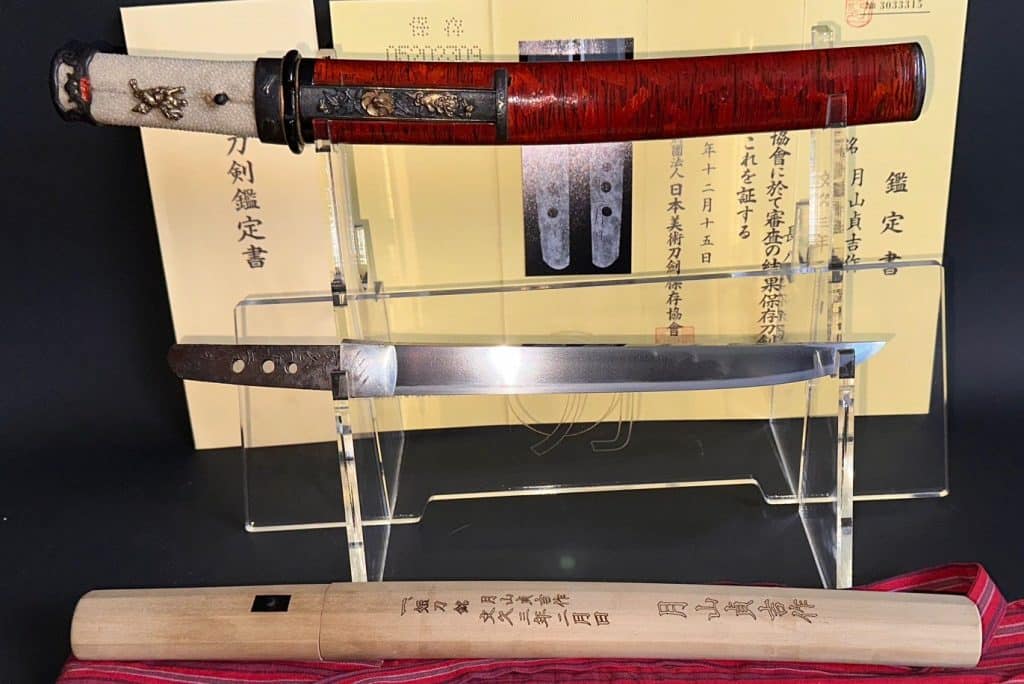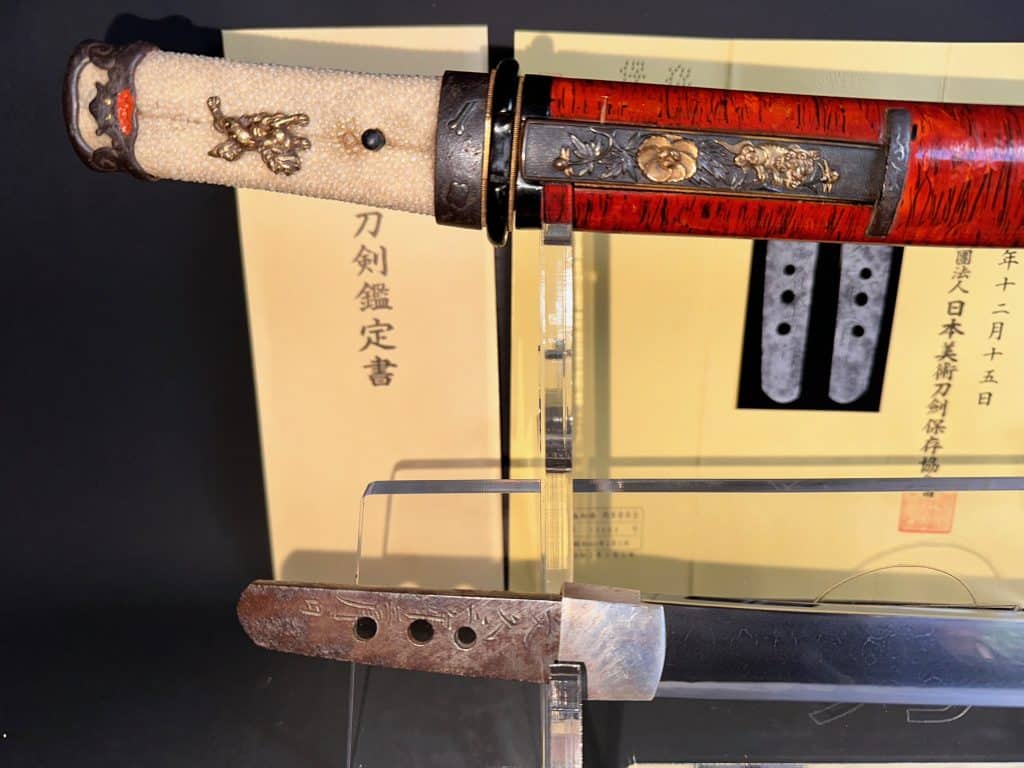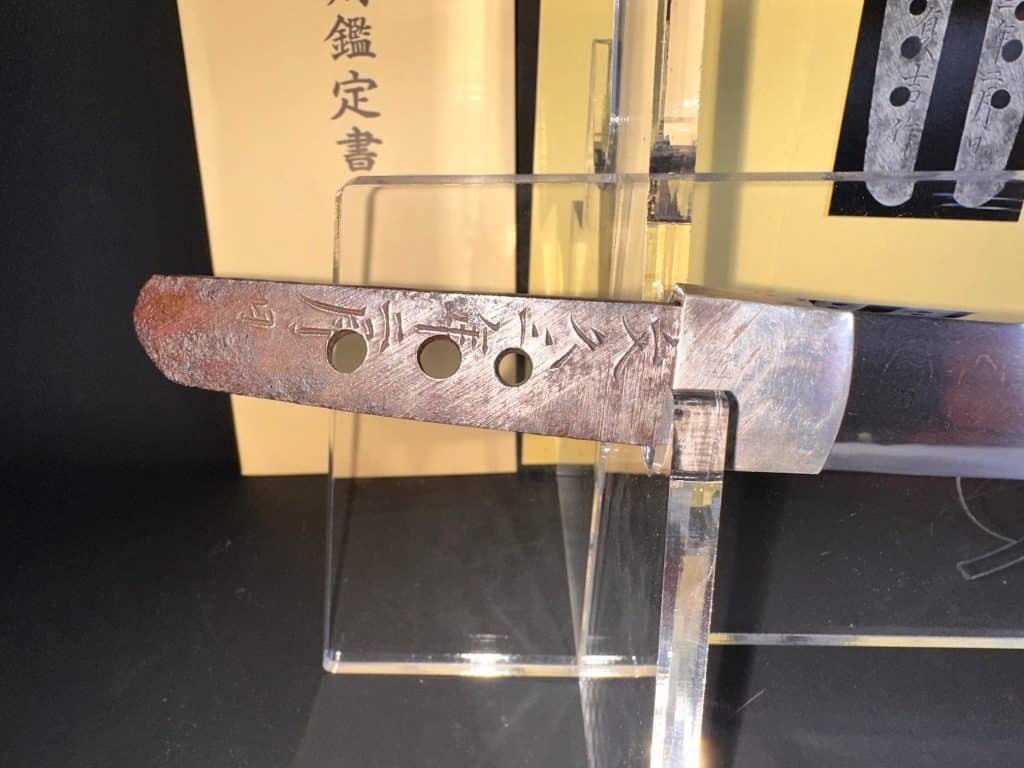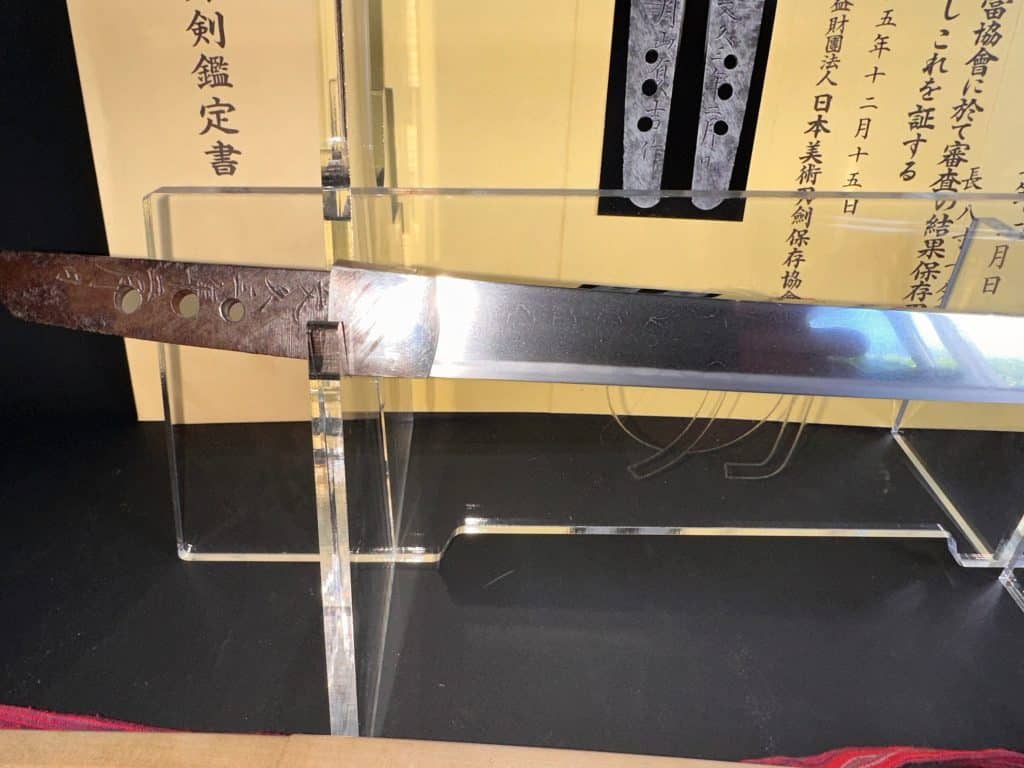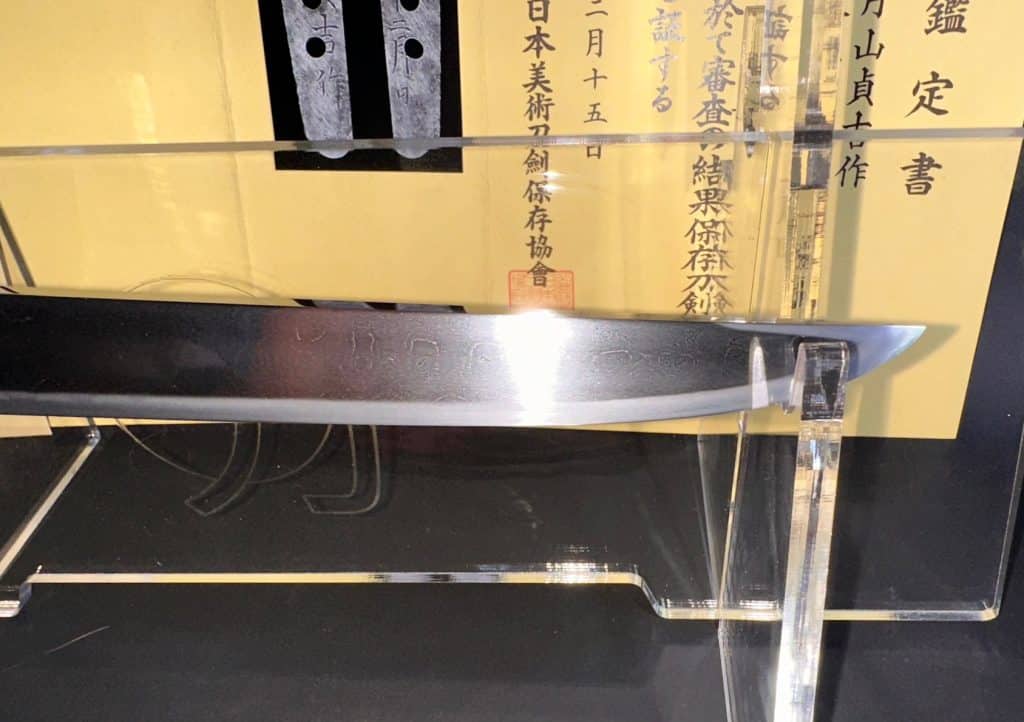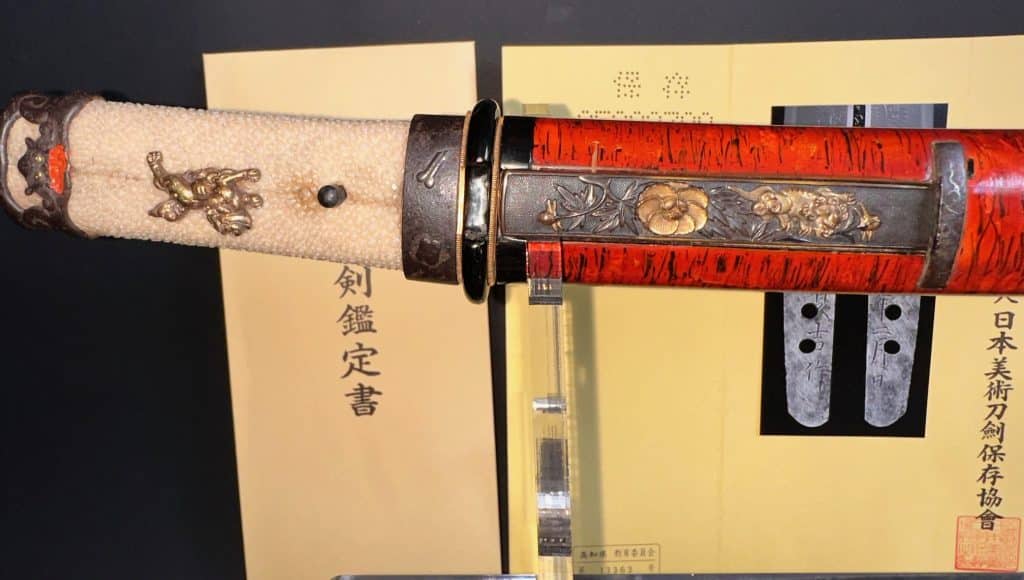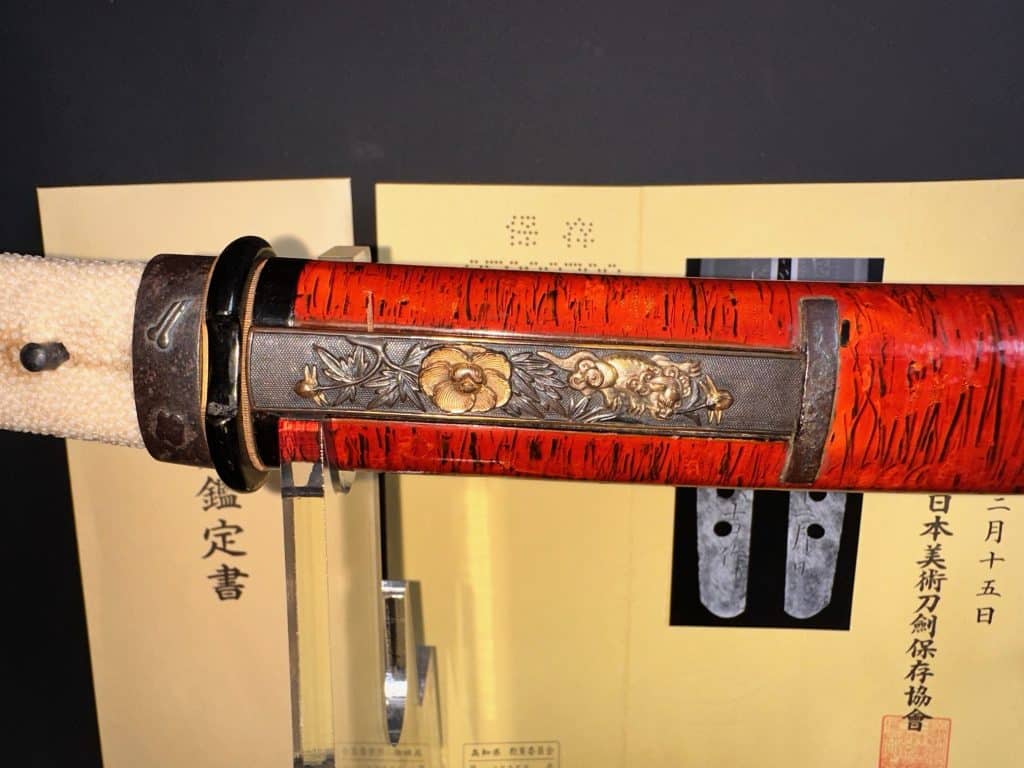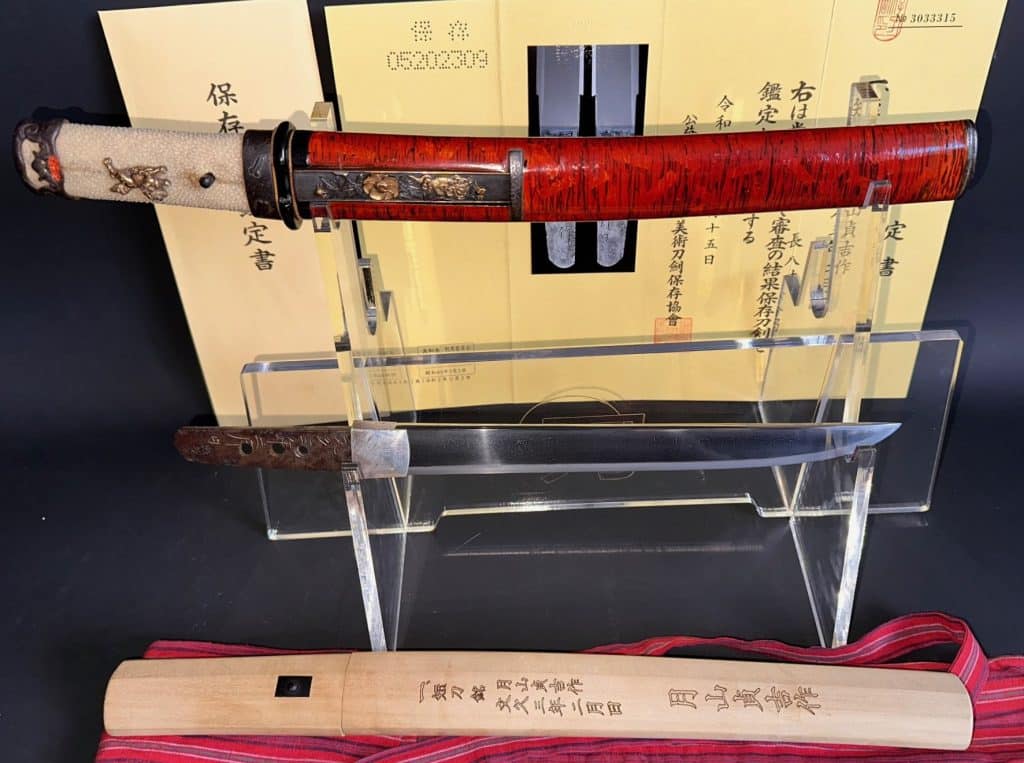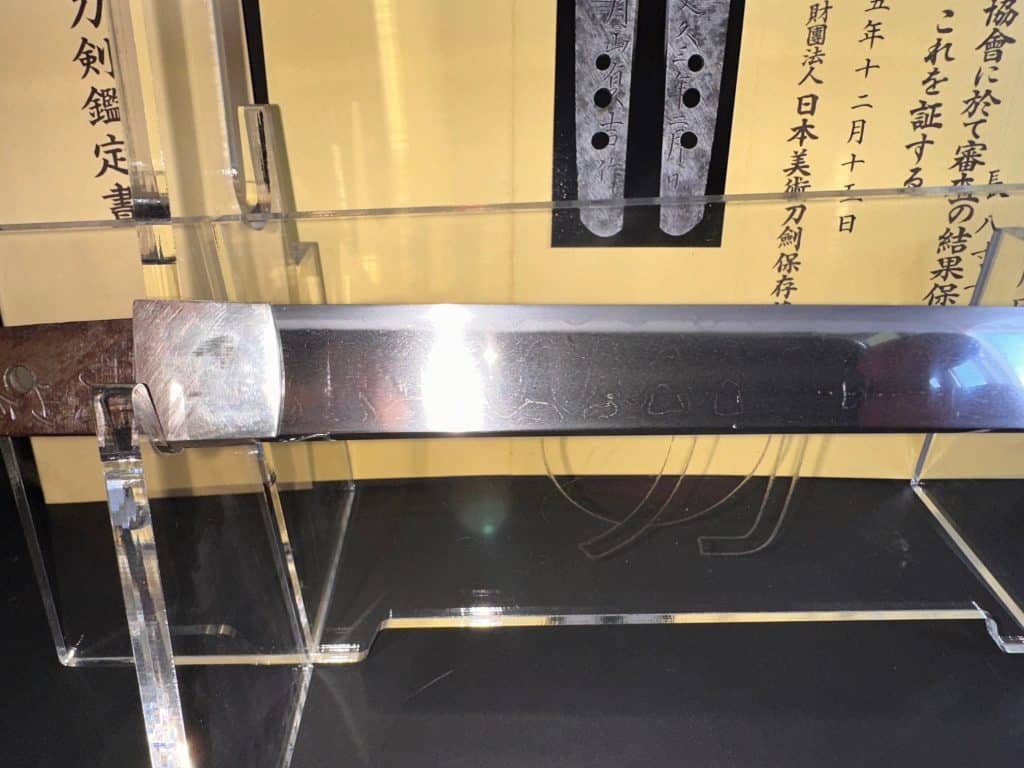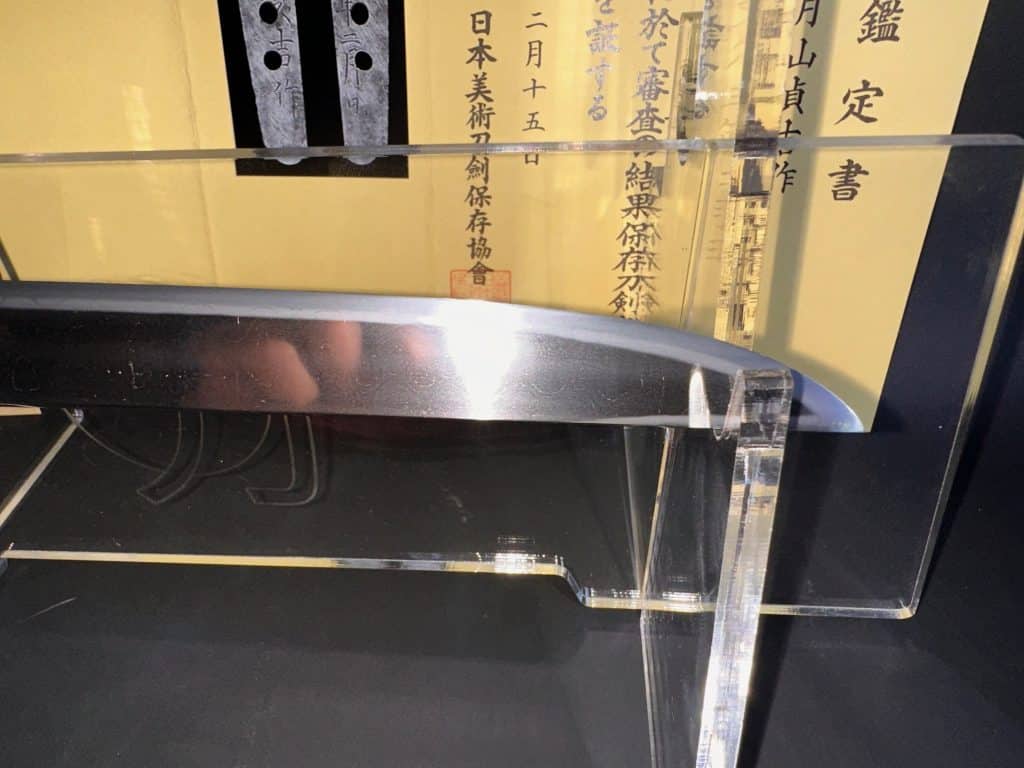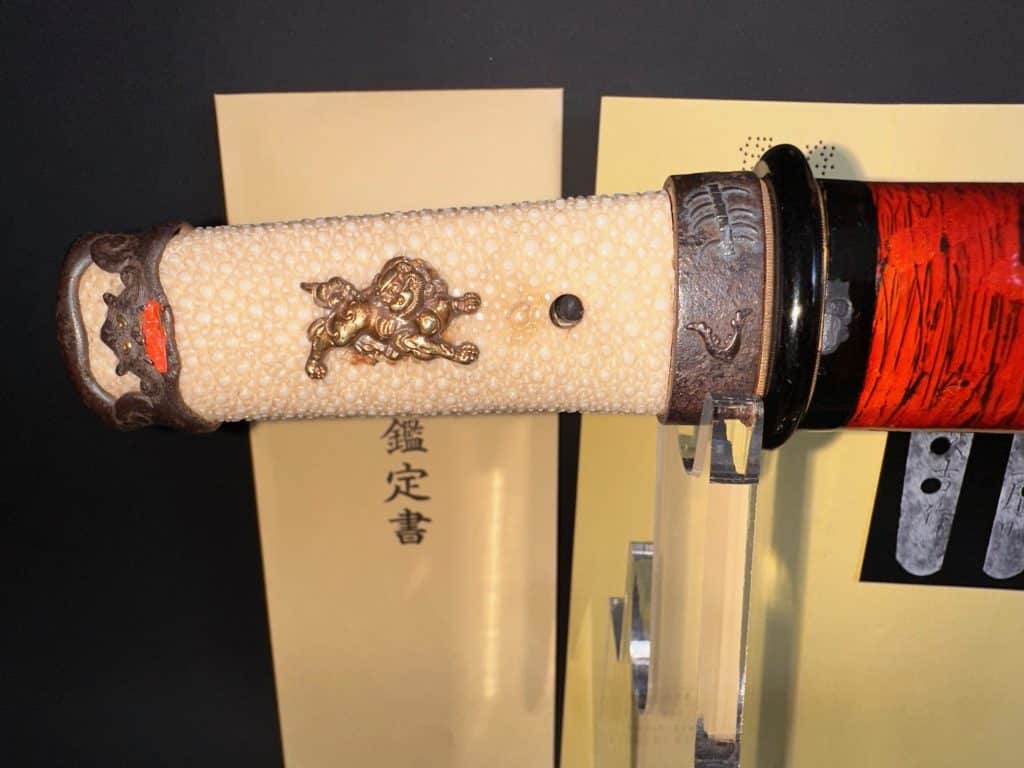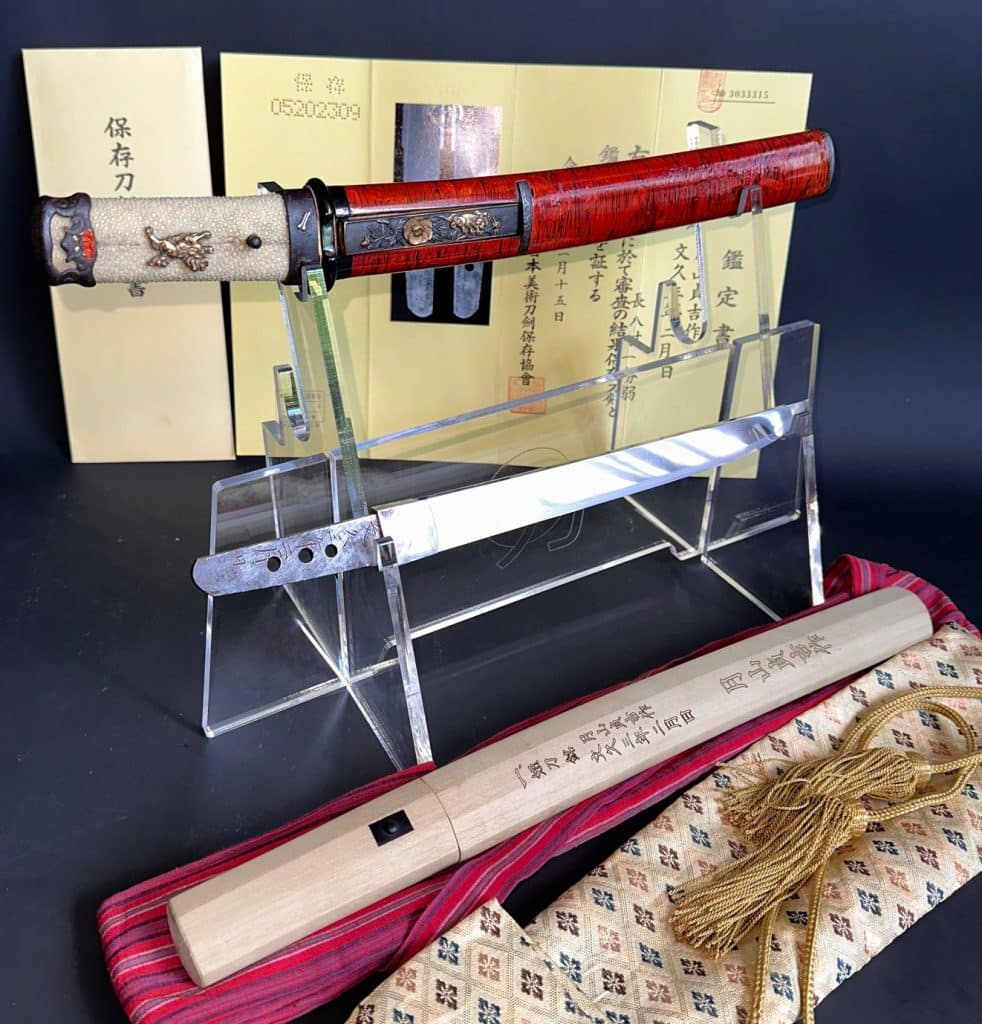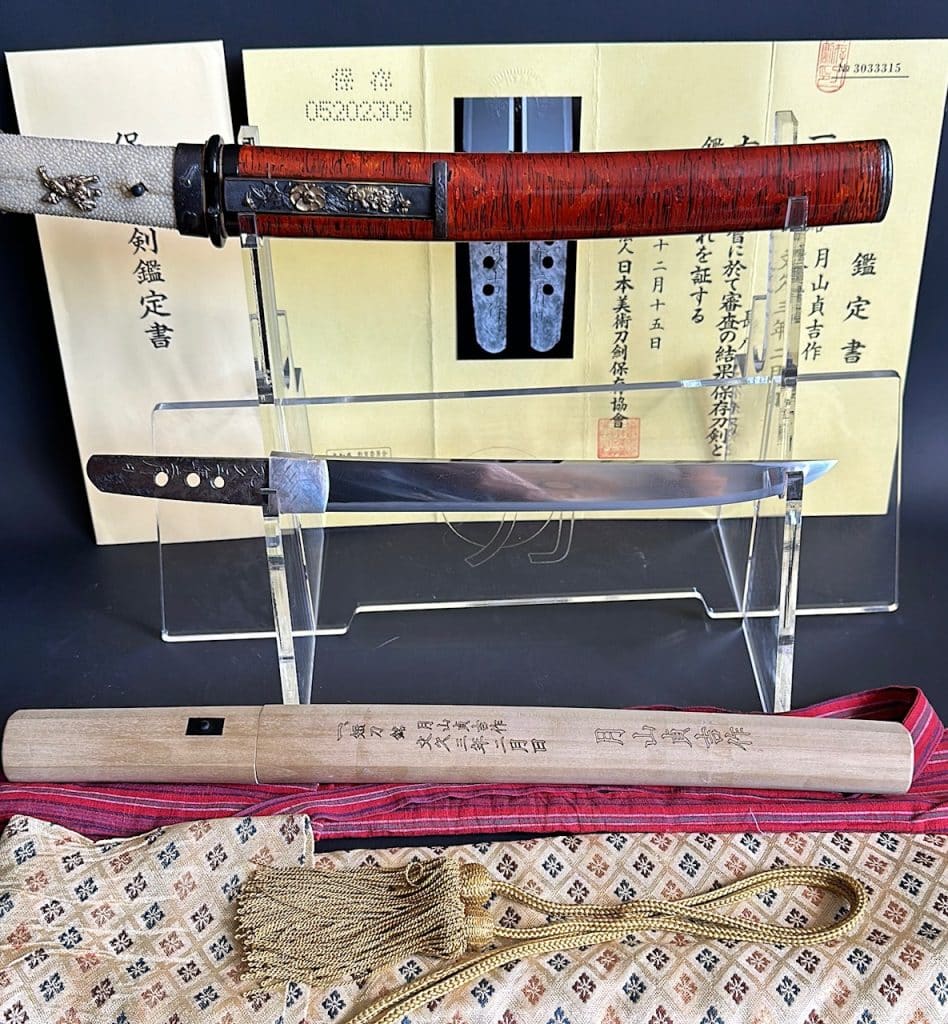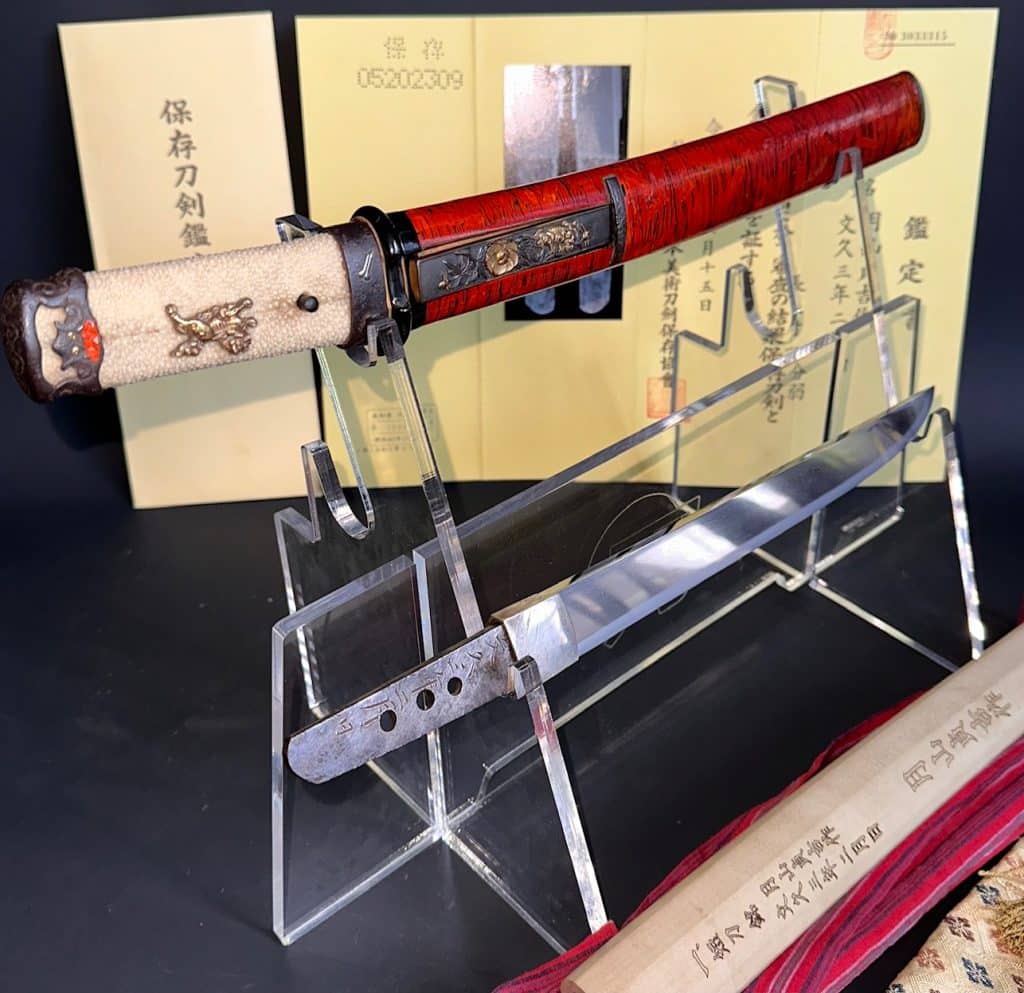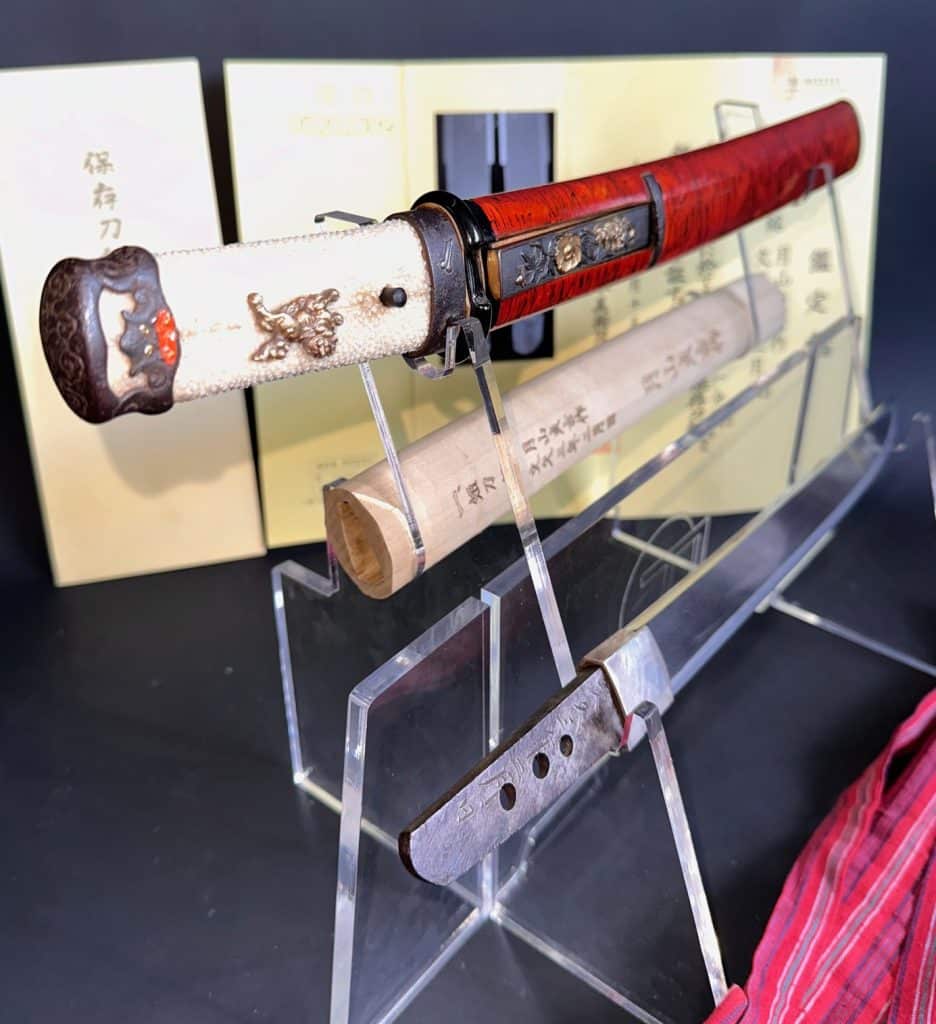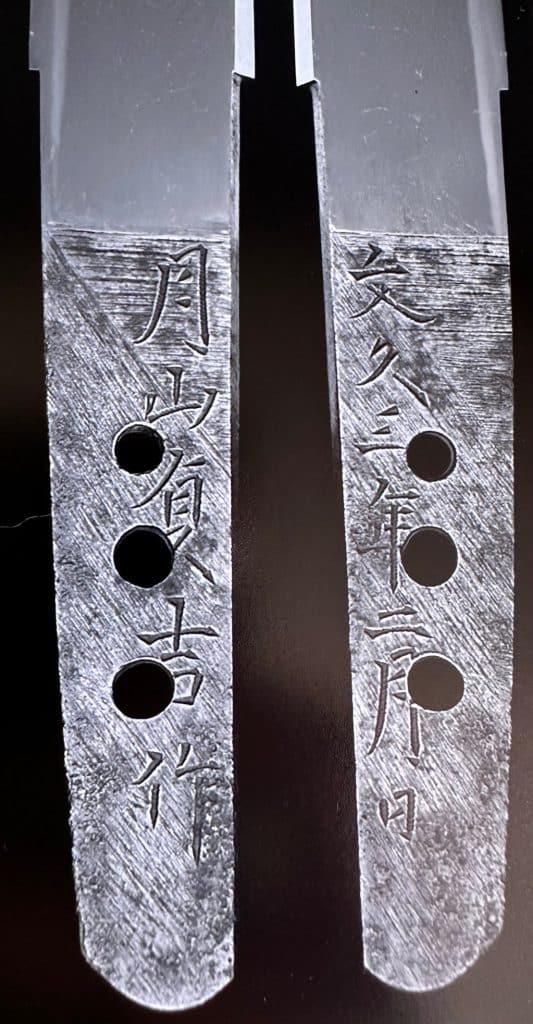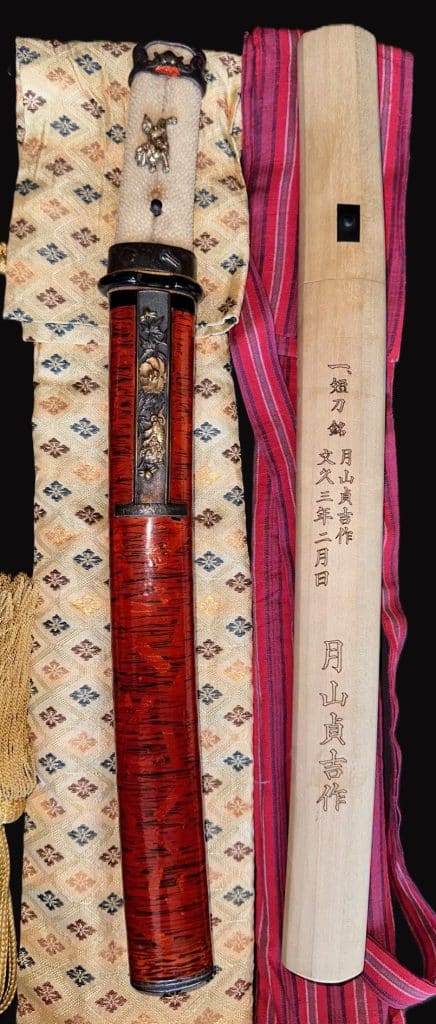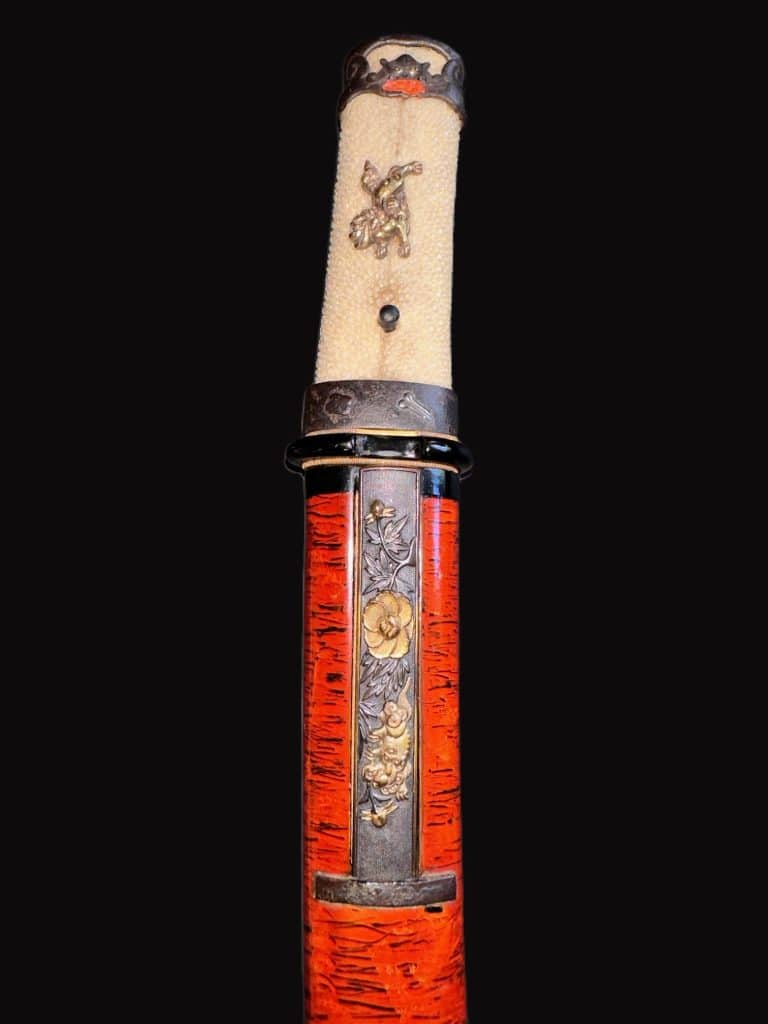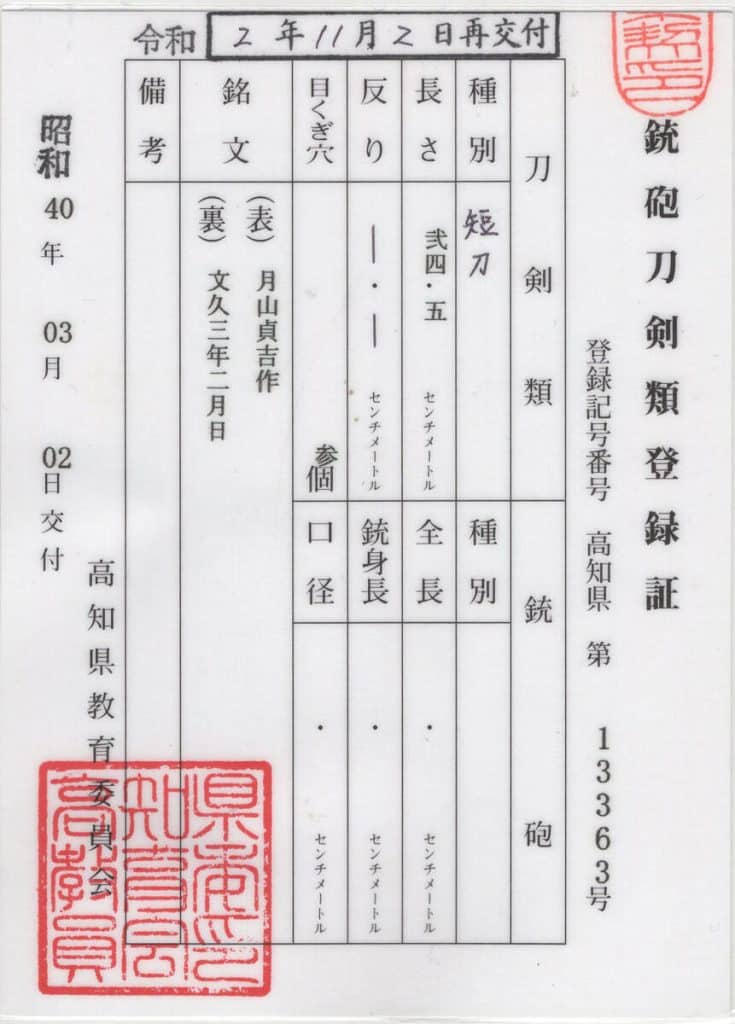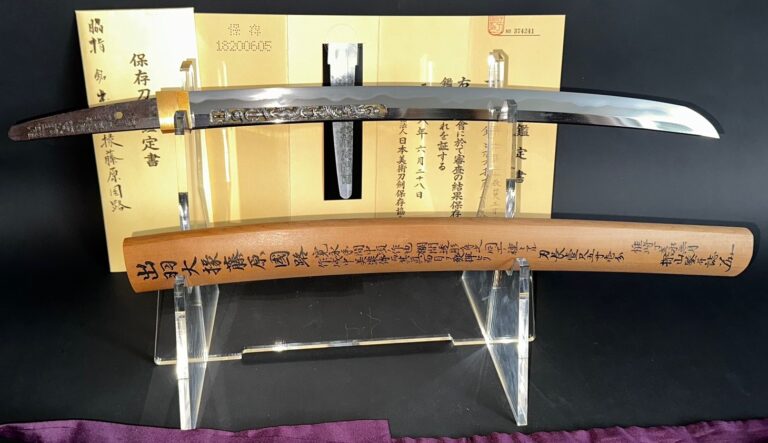Description
Tanto Made by Gassan Sadayoshi in 1863
This exquisite Tanto, crafted by the renowned swordsmith Gassan Sadayoshi in 1863, is a prime example of Japanese sword-making artistry from the Edo period. With a legacy of craftsmanship passed down through generations, Gassan Sadayoshi’s works are highly prized for their beauty, precision, and historical value.- Maker: Gassan Sadayoshi
- Year: 1863
- Type: Tanto (short sword)
- Era: Late Edo Period
Craftsmanship:
Gassan Sadayoshi, a master swordsmith from the prestigious Gassan school, was known for his exceptional skill in forging blades. The tanto he created in 1863 showcases his ability to blend traditional techniques with innovative designs. The blade features a distinctive hamon (temper line) and intricate jihada (grain pattern), reflecting the meticulous attention to detail and high standards of the Gassan tradition.- Blade Length (Nagasa): Typically shorter than a katana, the tanto’s blade length varies, making it ideal for close combat and ceremonial use.
- Hamon: The blade’s temper line is a beautiful, wavy pattern indicative of Sadayoshi’s expert heat treatment process.
- Jihada: The grain pattern is finely forged, demonstrating the high-quality steel and sophisticated forging techniques employed by Sadayoshi.
Historical Significance:
The late Edo period was a time of great cultural and social change in Japan, just before the Meiji Restoration. During this era, traditional swordsmithing reached new heights of refinement and artistry. Gassan Sadayoshi’s work from this period is highly regarded for its technical perfection and aesthetic appeal.Collectibility and Value:
Tantos by Gassan Sadayoshi are rare and sought after by collectors and enthusiasts worldwide. This 1863 tanto is particularly valuable due to its historical context, pristine condition, and the revered status of its maker. It represents a significant piece of Japanese history and craftsmanship.Condition:
- Blade: Excellent condition with a clear, well-preserved hamon and jihada.
- Mountings: Often comes with high-quality koshirae (mountings) that complement the blade’s elegance.
- Overall: A well-preserved piece that has withstood the test of time, maintaining its sharpness and beauty.

